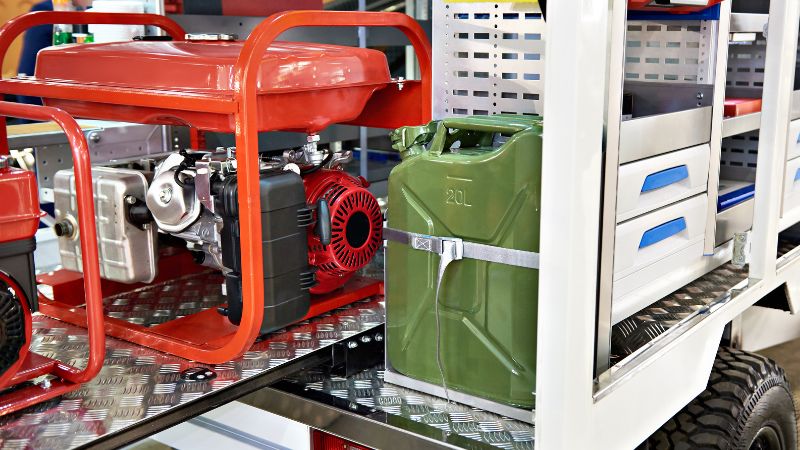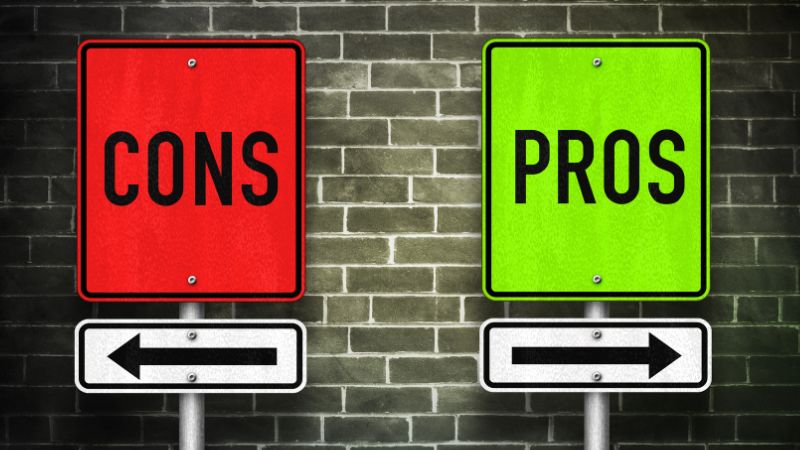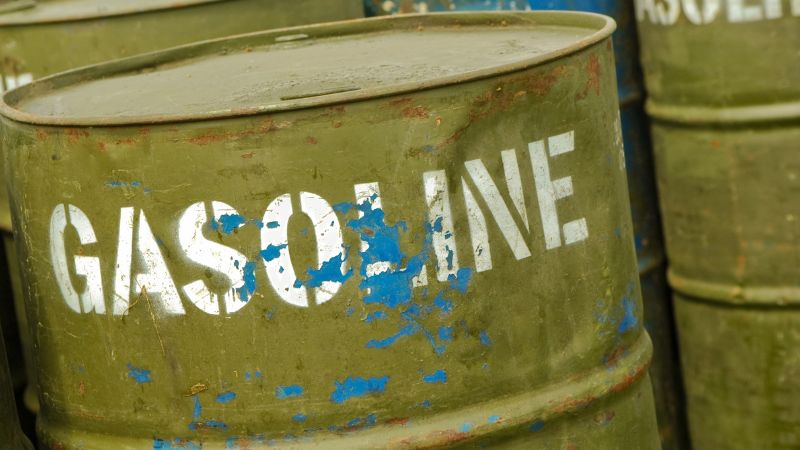In today’s world, having a reliable backup power source is more important than ever. Whether you’re preparing for emergencies, running a business, or enjoying outdoor adventures, a generator can be a lifesaver.
One type of generator that has gained popularity is the dual-fuel generator. This article will help you figure out what a dual fuel generator is and why you should consider one.

What Is a Dual Fuel Generator?
A dual-fuel generator is a reliable power source designed to run on two different types of fuel. These generators can operate on either gasoline or propane (LPG).
| Fuel Type | Common Use | Pros |
| Gasoline | Easy to find | High power output |
| Propane | Stores well | Cleaner emissions |
How Dual Fuel Generators Work?
Dual fuel generators are equipped with a fuel selector switch that allows you to choose between gasoline and propane.
When you select gasoline, the generator operates similarly to a conventional gasoline generator. The engine combusts the gasoline to produce mechanical energy, which is then converted into electrical energy.
When you switch to propane, the generator uses a different set of components. Propane is stored in a separate tank and is delivered to the engine through a regulator.
The engine is designed to handle the different combustion characteristics of propane, ensuring efficient operation.
Pros of Dual Fuel Generators
Dual fuel generators offer you more options than regular generators. These flexible machines let you keep your power on by allowing different fuel types and fewer interruptions.
Flexibility in Fuel Choice
With a dual fuel generator, you can run your generator on either gasoline or propane. This means if one fuel isn’t available, you still have a backup ready to go.
You can choose the fuel that best suits your needs and availability. For example, if gasoline is readily available, you can use it. If propane is more convenient or you have a large propane supply, you can switch to that.
Extended Run Time
You get a longer run time when you can use two different fuels. Start on gasoline, then switch over to propane when needed. This can keep your generator running for hours without shutting down.
Some dual fuel generators even let you hook up two propane tanks. That means you have power for longer stretches—great for extended blackouts, camping, or outdoor events. Not having to refuel as often is less work and lowers interruptions to whatever you’re powering.
Environmental Consideration
Using a dual fuel generator lets you pick the cleaner option when you want to. If you value a smaller footprint or just want to avoid gasoline smells, propane is a good choice.
Propane burns cleaner than gasoline, so using it with your generator gives off fewer harmful fumes and less carbon monoxide. This helps the air stay cleaner around your home or campsite. It also smells a lot less than gasoline when running.

Cons of Dual Fuel Generators
Dual fuel generators bring flexibility but come with a few downsides. You might face higher costs, extra upkeep, more things to keep track of, and the need for more space at home or work.
Higher Initial Cost
A dual fuel generator usually costs more up front than a single fuel model. You pay for the extra parts and tech needed to let it run on two fuels. The price difference depends on the brand, wattage, and fuel options. For many models, this means spending about $100 to $500 more.
Maintenance
Having a generator that uses both gasoline and propane means more parts that can wear down. These units have extra components like fuel selectors, hoses, and regulators—so there’s more that can go wrong over time.
Fuel lines and connections can dry out or crack if not used for a while, especially if you leave propane hoses attached. Dual fuel generators typically need more checks to make sure both systems work well.
Lower Power Output on Propane
When running on propane, dual fuel generators typically produce less power compared to gasoline. This is because propane generates less energy per unit than gasoline. If you require maximum power output, this can be a limitation.
Storage Space Requirements
You will need space for two fuel sources—usually propane tanks and gas cans—plus safe spots to keep them.
Gasoline must be stored in approved containers, away from heat or sparks. You’ll need to use stabilizers if you want to store gas for longer. Make sure to keep gasoline in approved containers and away from fire or heat.
Propane tanks take up extra room and can’t be squeezed just anywhere.
Main Fuel Types Used

Dual fuel generators are popular because you can easily switch between two main fuels. This gives you more flexibility, especially in emergencies or when traveling.
- Gasoline
Gasoline is one of the most common fuels for dual fuel generators. It’s easy to find, and you can fill up at almost any gas station. Gasoline is known for helping a generator start up quickly, even in cold weather.
Using gasoline is handy when you need power right away. It also usually has a higher energy output than propane, so you can get more wattage from your generator.
- Propane
Propane is another main fuel for dual fuel generators. Propane comes in tanks and is very stable for long-term storage. It does not degrade like gasoline, so you can keep it stored for years and use it when needed.
Propane burns cleaner than gasoline, so you’ll get fewer emissions and less odor. Propane may give you a little less power output than gasoline.
How to Switch Between Fuels?
Switching between fuels in a dual fuel generator depends on the setup your model uses. Some generators let you change fuels by hand, while others do it for you with automatic systems.
Manual Switching
With manual switching, you decide when to change from gasoline to propane (or the other way). Most dual fuel generators have a fuel selector switch or dial on the control panel.
To switch, you first turn off the generator if it’s running. Next, use the switch to pick the new fuel type. Make sure you have enough fuel in the tank or or your propane tank connected.
After you flip the switch, start your generator again. If you’re switching to propane, double check all connections so there are no leaks. For some models, you might need to bleed the lines before running on propane.
Automatic Switching
With automatic switching, the generator tracks the fuel supply and switches to another fuel without you having to do anything. These generators use sensors or programmable controls to know when one fuel is low or runs out.
When the first fuel runs out, the system automatically changes over. This is handy if you need constant power and don’t want to stop the generator. Some high-end models can be programmed to prioritize a specific fuel or switch at set times.
Popular Dual Fuel Generator Brands
When you’re shopping for a dual fuel generator, you’ll notice there are a few brands that come up again and again.
| Brand | Known For | Portable Options |
| Champion | Easy to use, reliable | Yes |
| Westinghouse | Sturdy, many sizes | Yes |
| Firman | Portable, easy to switch fuels | Yes |
| DuroMax | Jobsite and home use, powerful | Yes |
| Gretechpower | Versatile uses, budget-friendly | Yes |
Tips for Maintaining Dual Fuel Generator
Taking care of your dual fuel generator is the best way to make sure it starts when you need it. Simple checks and good habits will help your generator last longer and work more safely.
Routine Checks
Make it a habit to do a quick visual inspection every month. Check for any fuel leaks, loose wires, and make sure the generator sits on a flat surface with plenty of ventilation. This helps prevent fire risks and damage to engine parts. If you spot oil under the generator or smell gas, do not turn it on—get it checked right away.
Run the generator for at least 10–15 minutes once a month. This keeps engine parts lubricated and lets you listen for odd noises. Clean any dust or leaves around the unit since blocking airflow can cause overheating. Don’t forget to check and change the oil and air filter as needed, especially if you use it often.
Keep a maintenance log. Write down when you run it and any repairs or checks you did. This record helps you stay on schedule and catch problems early.
Fuel Storage Advice
Store your fuel safely and use only the type recommended by your generator’s manual—usually gasoline, propane, or both.
Always keep fuel containers in a cool, dry place away from direct sunlight and heat sources. Gasoline goes stale over time, so use fuel stabilizer if you plan to store it for more than a month.
Don’t pack the tank full and let it sit for months. Instead, drain the old fuel after long periods of non-use, since stale fuel can damage the engine. If you have extra gas left, you can pour it into your car so it doesn’t go to waste.
Switch between fuel types now and then if your machine allows it—this keeps both fuel systems working well. Always double check for leaks or rust on propane tanks, and keep hoses clean and tightly sealed.
Frequently Asked Questions
Can I use natural gas in a dual fuel generator designed for propane?
No, most models that run on gasoline and propane are not designed for natural gas. You need a unit specifically built to handle natural gas, or you may risk damaging the generator or voiding the warranty. Always check your manual before trying a different fuel.
What’s the run time difference when using gasoline vs. propane in a dual fuel generator?
Gasoline usually gives a longer run time compared to propane for the same size tank. However, propane can burn cleaner and store longer without going bad.
The exact numbers depend on your model, but expect differences in efficiency and total hours of use.
